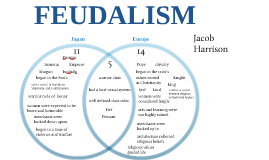
Historically, Sino-Japanese relations have shown three distinct characteristics:Ĭhina, the stronger of the two neighbors, is never known to have attempted to conquer Japan, the only exception being during the thirteenth century when China itself was under alien (i.e., Mongolian) rule.1 There is no record to the contrary.Ĭhina periodically provided Japan with crucial cultural imports that. By bringing together in a new configuration economic anthropology, ecology, and culture history, Caldararo not only proposes a new model of human social evolution, but equally importantly creates a methodology for speaking to, and against, our present economic and environmental situation. It has been the rupture of this fundamental relationship that lies at the basis of much of our present crisis and the unsustainable economic patterns that humans have created. By drawing on this source, Caldararo builds a model of the evolution of human economies which stir up substantial debate, shows how economic anthropology provides a tool for the interrogation of economic theory, and ties economics to ecology. Economic anthropology, is the repository of a vast store of wisdom both about actual alternative and workable economic systems and about their evolution. Contemporary discussions of “sustainability,” especially in the field of development studies, have oddly neglected to look to anthropology. Caldararo not only challenges the foundational assumptions of conventional economic theory, but situates economic behavior (something quite different and universal amongst human beings) in both a historical and an ecological context.

In The Anthropology of Complex Economic Systems, Niccolo Caldararo offers a much more radical and challenging answer: that the fundamental assumptions on which the modern “science” of economics has been erected are false, and that it is through the medium of anthropology, particularly the relatively neglected field of economic anthropology, that an alternative and sound basis for both the understanding of economic behavior and for the shaping of economic futures can be constructed. The master narrative that was supposed to lead us to secular salvation-economics-has proved to be a large part of the problem rather than the much anticipated solution. Today we live in what Ulrich Beck has aptly characterized as a “risk society” shaped by intensifying crises outside of our control and seemingly outside of our comprehension. At the same time a new revitalization movement is reshaping the Anglo-American west, one that challenges the role of China in trade and policy. Investigation of some of the underlying factors in the East illuminate potential trends for the future. From the Ukraine to the Pacific a kind of “Phoney War” has crept along in starts and stops with overtures of friendship interrupted with threats of violence and minor acts of aggression. The specific nature of this conflict is economic in general form, yet political in rhetoric, especially from western sources. At the same time the west is distracted by populist movements whose theme is focused on immigrants from former colonial nations or non-whites in a context, as in America, where aboriginal peoples have been slaughtered and marginalized. While the world has been distracted since the American war in Vietnam and the Soviet and western adventures in Afghanistan, as well as a rising tide of rebellion directed against symbols of the west by Islamic fundamentalists, a curious contest has appeared on two fronts: Russia and China. The report is structured as a travel route for officials from Chinese colonies in Korea to Japan and clearly describes the life of the people in transition from the Yayoi to the Tomb cultures, a transition that may have been induced by contact with Chinese officials or religious missionaries. Here we find a detailed essay on the people of Japan called the Wa.

Early Chinese accounts of Japan are drawn from the Wei chih, in sections dealing with the Wei dynasty, The Account of the Three Kingdoms complied before 297 C.E. He argues that farming of rice came later than other domesticated crops and that there was cooperation and continuity between earlier Neolithic (Jomo) peoples and farmers.

Takahashi, (2009) considers the evidence concerning whether the Yayoi represent the arrival of new people or the assimilation of a new farming technique. This begins the advance of farmers into the Neolithic hunting and gathering peoples referred to as Jomo. with the unification of China under the Ch'in Dynasty and rice paddy field farming may be significant. Varley (1984) suggests that the coincidence of evidence of farming and other cultural elements of the Yayoi in Japan at about 300 B.C.E. Bottom, from left to right: Martinho Hara, Miguel Chijiwa. Top, from left to right: Julião Nakaura, Father Mesquita, Mancio Itõ. The first Japanese Embassy to Europe, in 1586.


 0 kommentar(er)
0 kommentar(er)
